Recovering from a total hip replacement
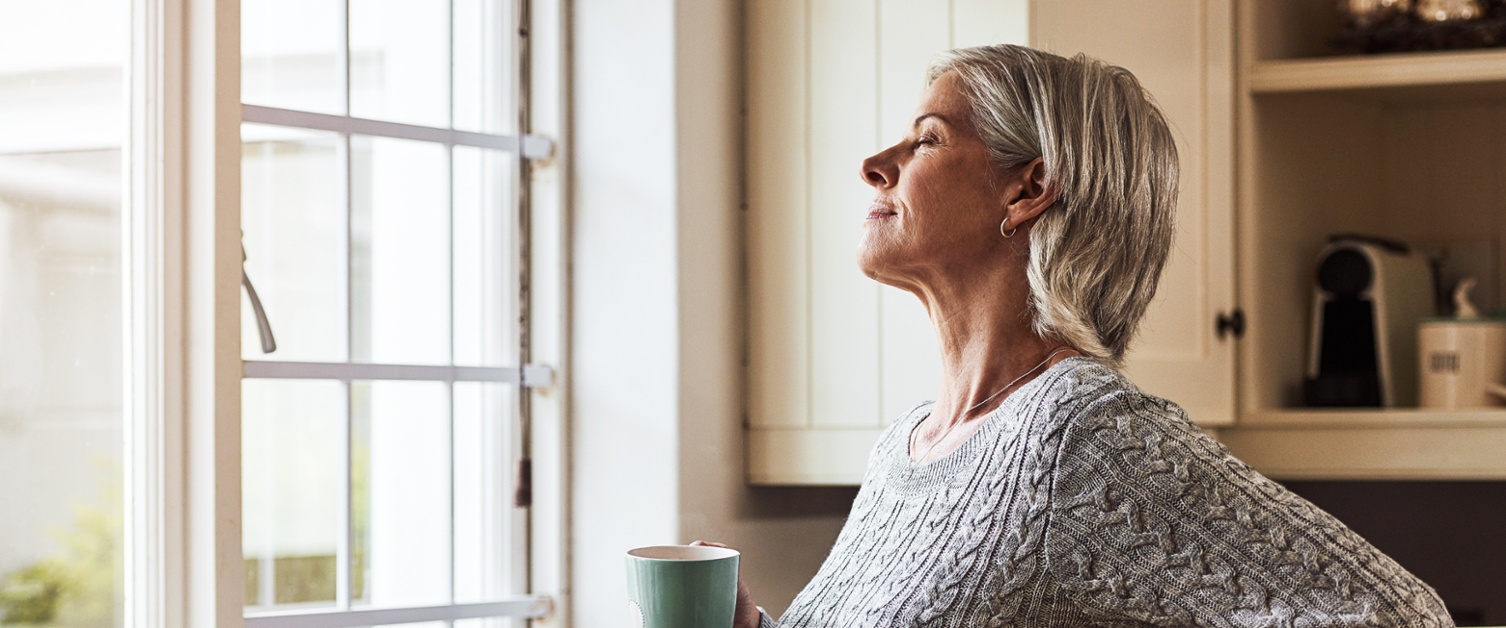
The role of the physiotherapist
You will attend a therapy-led, pre-assessment clinic one week prior to your surgical date.
This will provide an opportunity for the physiotherapist to gather information, complete an assessment and identify your needs to ensure you are supported on the ward and on discharge.
Once admitted, a member of the physiotherapy team will provide any walking aids that you may need and answer any physiotherapy questions you may have. You will then be assessed following your surgery and the appropriate treatment sessions provided, until you are deemed fit for discharge.
Skip straight to exercises after surgery
Skip straight to frequently asked questions
Hip precautions
We suggest this advice is followed for three months.
These precautions will be discussed during your pre-assessment clinic and while on the ward.
Important
- Do not cross your legs. When sleeping, place a pillow between the legs to prevent crossing.
- Do not sit on a low chair. Your hip should not be bent more than 90 degrees when seated.
- Do not bend down from your hips. Hands should not reach beyond your knees.
- Do not twist in a standing position.
Getting in and out of bed: It is advisable to get out of bed leading with your affected (operated) leg.
Walking and walking aids
Every patient’s recovery is different. However, you can expect to be walking from between six to 24 hours after your operation. Initially, you may need the help of a walking frame, then progress on to elbow crutches/sticks.
This will be advised by your physiotherapist. Within three months many patients will be walking independently, depending on their baseline mobility status.
Using a walking frame
- When walking, push the frame forward keeping all four legs in contact with the floor.
- Keep a gap between yourself and the frame when walking.
- When turning, pick the frame up and complete small turns and steps.
- The frame should not be used to pull up on from a seated position.
Using two elbow crutches
- Place your arms in the cuffs and ensure the handles are facing forward.
- Place both crutches one step out in front.
- Step your affected/operated leg in line with the crutches and then bring your other leg in line.
- Regularly check for rusting and ensure the rubber stoppers are not worn.
Stairs
If you have steps/stairs in your property, your physiotherapist will teach you how to go up and down stairs prior to discharge.
Going up: use a banister if possible. Lead with non-operated leg, followed by operated leg and crutch.
Going down: lead with operated leg and crutch, then non-operated leg.
Exercises after your surgery
The physiotherapist will encourage you to complete the following exercises after your surgery.
These exercises should be done from day one until full recovery.
- Ankle pumps - Bend your ankle up and down as far as able. Repeat 20 times every hour. Image shows a person lying on a bed to demonstrate the exercise with their right foot flexed and their toes pointing up towards the ceiling.
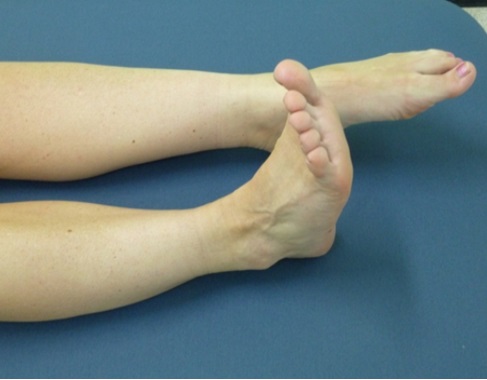
- Static quads - Lie on your back on the bed. Press the knee of the operated leg into the bed, tightening the muscle on the front of your thigh. Hold for three seconds. Do not hold your breath. Repeat 10 times, three to four times a day. Image shows a person lying on a bed to demonstrate the exercise. Their right leg is flat, with the back of their knee pressed to the bed. Their left leg is bent at the knee.
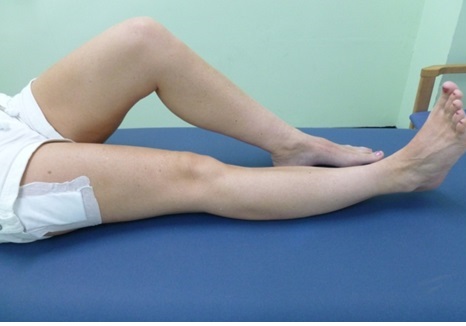
-
Gluteal squeeze - Squeeze your buttock muscles as tightly as possible and hold for three seconds. Do not hold your breath. Repeat 10 times, three to four times a day. There is no image to demonstrate this exercise.
-
Inner range quads - Lie on your back or sit with a rolled towel under the knee (operated limb). Lift your foot, straightening the knee and hold for three seconds. Do not raise your thigh off the roll. Do not hold your breath. Repeat 10 times, three to four times a day. Image shows a person demonstrating the exercise. They are lying on a bed on their back with a rolled up towel underneath their right knee. Their right leg is straight with the foot lifted off the bed. The left leg is bent.
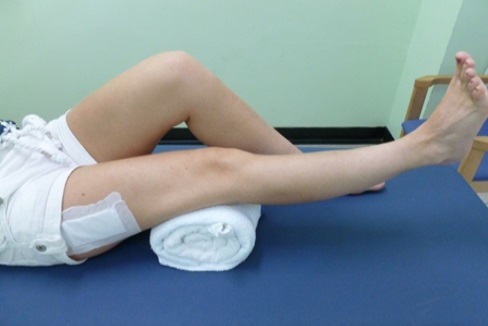
-
Hip flexion - Lie on your back. Bend the knee of the operated leg and slide your heel towards your buttocks. Repeat 10 times, three to four times a day. Image shows a person lying on their back with their right leg bent.

-
Knee extension in sitting - Sit in a chair with your back against the back of the chair. Straighten the knee of the operated leg slowly. Repeat 10 times, three to four times a day. Image shows a person sat in a chair to demonstrate the exercise. Their right leg is straight, with their foot off the floor.
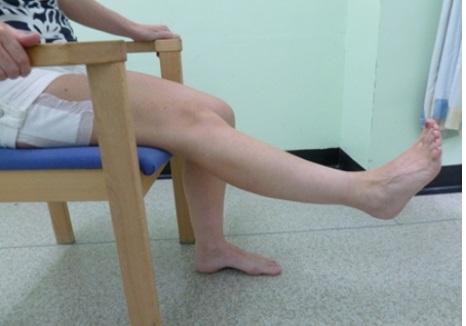
-
Hip flexion in standing - In standing, holding on to firm surface, lift the knee of the operated leg as high as you can, but no higher than your hip. Keep your body upright during exercise. Repeat 10 times, three to four times a day. Image shows a person demonstrating this exercise. They are standing facing a kitchen unit with both hands on the unit top. Their right leg is bent at the knee.
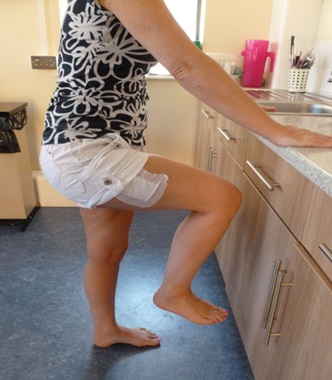
-
Hip extension in standing - In standing, holding on to firm surface, move the operated leg out behind you, than back to the centre. Keep your body straight during the exercise. Repeat 10 times, three to four times a day. Image shows a person demonstrating this exercise. They are standing facing a kitchen unit with both hands on the unit top. Their right leg is behind them.
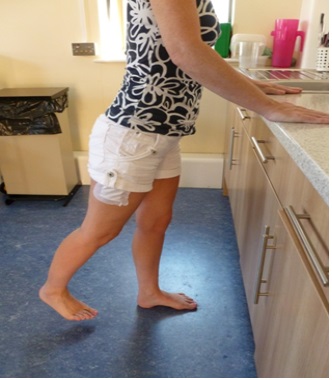
-
Hip abduction in standing - In a standing position, holding on to a firm surface, slide the operated leg out to the side, than back to the centre. Keep your body upright during this exercise. Repeat 10 times, three to four times a day. Image shows a person standing with their left leg out to the side with the left foot on the floor. Their right leg is in the centre.
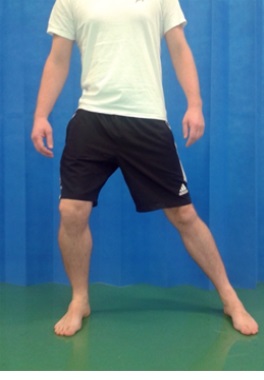
Rydym yn croesawu gohebiaeth a galwadau ffôn yn y Gymraeg neu'r Saesneg. Atebir gohebiaeth Gymraeg yn y Gymraeg, ac ni fydd hyn yn arwain at oedi. Mae’r dudalen hon ar gael yn Gymraeg drwy bwyso’r botwm ar y dde ar frig y dudalen.
We welcome correspondence and telephone calls in Welsh or English. Welsh language correspondence will be replied to in Welsh, and this will not lead to a delay. This page is available in Welsh by clicking ‘Cymraeg’ at the top right of this page.